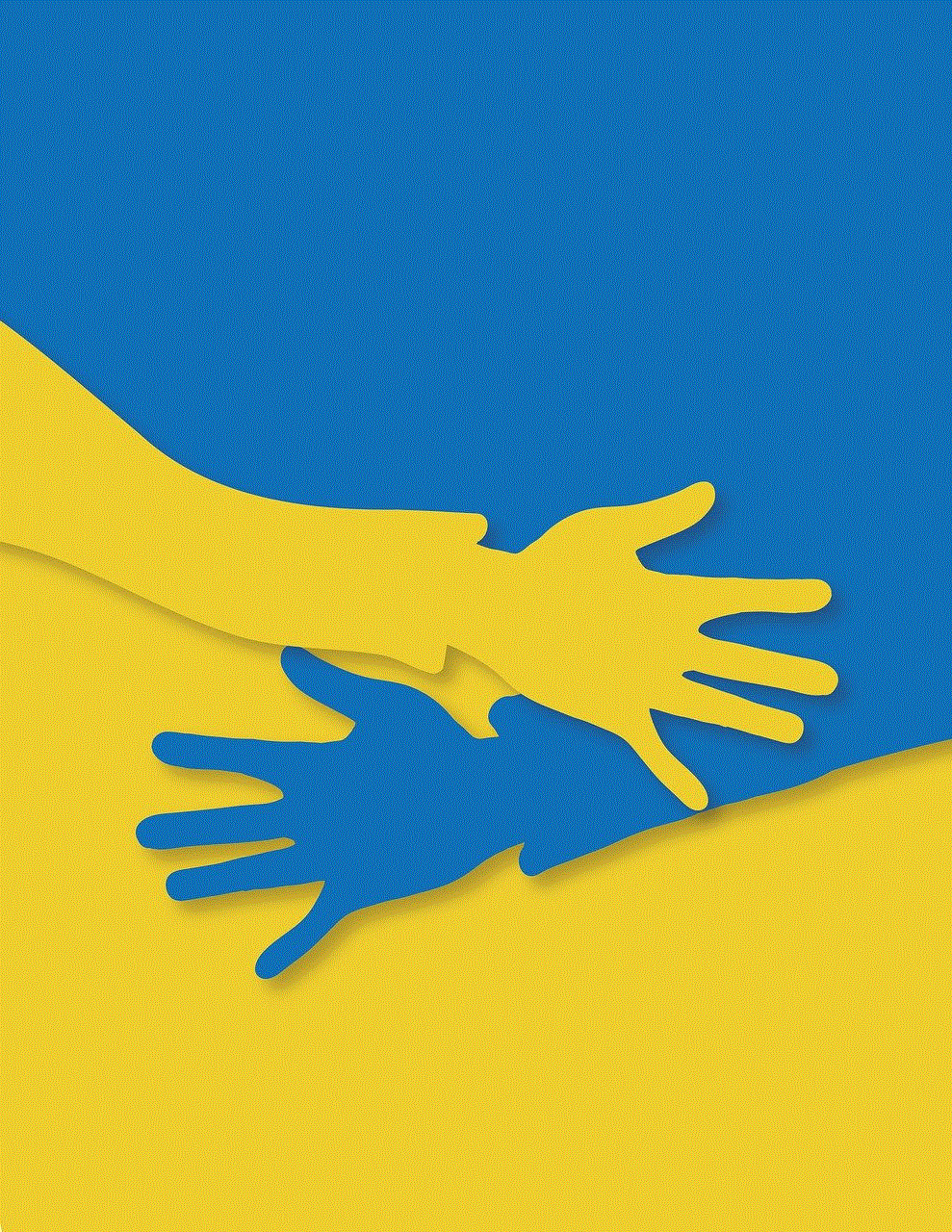how to find screen time passcode on iphone
Title: How to Find the Screen Time Passcode on iPhone: A Comprehensive Guide
Introduction:
With the increasing dependency on smartphones, managing screen time has become crucial for maintaining a healthy digital lifestyle. Apple introduced Screen Time on iOS devices, allowing users to monitor and control their screen usage effectively. However, if you forget your Screen Time passcode, it can be frustrating. In this article, we will explore various methods to help you find the Screen Time passcode on your iPhone.
1. Understanding Screen Time on iPhone:
Screen Time is a built-in feature on iOS devices that provides detailed insights into your device usage, app activity, and content restrictions. It enables you to set limits on app usage, schedule downtime, and manage parental controls. The Screen Time passcode acts as a safeguard to prevent unauthorized changes to these settings.
2. Resetting the Screen Time Passcode via Apple ID:
If you forget your Screen Time passcode, you can reset it using your Apple ID. This method requires an active internet connection and an Apple ID associated with your iPhone. By following a series of steps, you can regain access to your Screen Time settings and set a new passcode.
3. Utilizing the “Forgot Passcode” Option:
Another way to find your Screen Time passcode is by using the “Forgot Passcode” option. This method involves resetting all your settings, including the passcode. It is important to note that this will erase all your customized settings, so it should be considered as a last resort.
4. Restoring iPhone through iTunes Backup:
If you have previously backed up your iPhone using iTunes, you can restore your device to a previous backup to recover the Screen Time passcode. However, this method will also restore all other data and settings from the backup, so it’s crucial to consider the implications before proceeding.
5. Using Third-Party Tools:
There are third-party tools available that claim to help recover the Screen Time passcode on iPhones. These tools often come with a price, and their effectiveness may vary. It’s essential to research and select a reputable tool with positive user reviews to ensure data security.
6. Seeking Apple Support:
If all else fails, reaching out to Apple Support can be a viable option. Apple’s customer support team can provide guidance and assistance in recovering your Screen Time passcode. However, be prepared to provide proof of ownership and personal identification details to verify your account.
7. Preventing Future Screen Time Passcode Issues:
To avoid facing the hassle of recovering your Screen Time passcode in the future, it is advisable to take preventive measures. These include regularly backing up your iPhone, utilizing a password manager, setting a memorable passcode, and avoiding sharing your passcode with others.
8. Tips for Managing Screen Time:
While finding the Screen Time passcode is essential, it is equally important to maintain a healthy screen time routine. Implementing strategies such as setting app limits, scheduling downtime, and utilizing content restrictions can significantly contribute to a balanced digital lifestyle.
9. Exploring Alternative Screen Time Management Apps:
Apart from Apple’s built-in Screen Time feature, several third-party apps offer advanced screen time management options. These apps provide additional features like tracking app usage across devices, setting location-based restrictions, and offering personalized insights into your digital habits.
10. Establishing Open Communication:
Lastly, it’s crucial to establish open communication with family members, especially children, regarding screen time management. Educating them about the importance of a balanced digital lifestyle and engaging in healthy discussions can help foster responsible device usage.
Conclusion:
Forgetting your Screen Time passcode on your iPhone can be frustrating, but there are various methods to recover it. Whether you utilize the Apple ID reset option, the “Forgot Passcode” feature, or reach out to Apple Support, there are solutions available. Additionally, considering preventive measures and exploring alternative screen time management apps can contribute to a healthier digital lifestyle. Remember, managing screen time is not only about finding the passcode but also about developing a mindful approach towards technology usage.
what does lyk stand for
The internet is full of acronyms, abbreviations, and slang words, and “lyk” is one of them. It is a term that is commonly used in online communication, especially in messaging and social media platforms. However, many people are still confused about its meaning and usage. In this article, we will explore the origins of the word “lyk” and its various meanings to uncover what it stands for.
The word “lyk” is a shortened form of the word “like.” It is believed to have originated in the early 2000s, around the same time as the rise of social media and messaging platforms. It is thought to have been popularized by teenagers and young adults who were looking for a quicker way to communicate online. The word “like” was already a commonly used term, especially in the context of social media, where users can “like” posts or photos of others. Therefore, “lyk” was an easy and convenient alternative.
Initially, “lyk” was used as a way to express approval or agreement with something. For example, if someone shared a post on social media, their friends or followers could comment “lyk” to show that they liked the post. It was a simpler and more casual way to convey the same meaning as “like.” Over time, “lyk” also became a common response to someone’s statement, similar to “yeah” or “okay.” For instance, if someone said, “I can’t wait for the concert next week,” their friend might reply, “lyk!”
However, as with many internet slang words, the meaning and usage of “lyk” have evolved over time. Today, it is no longer just a substitute for “like” or a response to express agreement. Instead, it has become a versatile term that can have various meanings depending on the context in which it is used.
One common usage of “lyk” is as a filler word or an interjection. It is often used at the beginning or end of a sentence to add emphasis or emotion. For example, someone might say, “Lyk, I can’t believe you’re going to Europe next month!” In this context, “lyk” serves as an exclamation to show excitement or surprise. Similarly, someone might say, “I’m so bored, lyk” to express their boredom.
Another meaning of “lyk” is as a question word. It can be used to seek clarification or confirmation about something. For instance, if someone says, “I heard there’s a new restaurant in town, lyk?” they are asking for confirmation if the information they heard is true. Similarly, someone might say, “You’re going to the party tonight, lyk?” to confirm if their friend is attending the party.
In some cases, “lyk” is also used as a verb. It can be used to describe the action of someone liking or approving of something. For example, someone might say, “I lyk your new haircut!” to express their admiration for it. Similarly, someone might say, “I don’t lyk how you’re always late for our meetings,” to convey their disapproval. In these cases, “lyk” is used as a verb in its present tense form, similar to “like.”
Apart from its various meanings, “lyk” is also used in different forms, such as “lyke” and “lykez.” These forms are used to add emphasis or exaggeration to the word. For instance, someone might say, “I’m lykez starving, let’s grab some food,” to emphasize their hunger. Similarly, someone might say, “I lyke really love your outfit today,” to show their admiration.
The usage of “lyk” is not limited to English-speaking countries. It has also been adopted by speakers of other languages, such as Spanish, French, and Portuguese. In these languages, “lyk” is used to express the same meanings as in English. For instance, in Spanish, someone might say “me gusta” (I like it) or “vale” (okay), but in online communication, they might use “lyk” instead.



Another interesting aspect of “lyk” is its usage by different age groups. While it was initially popular among teenagers and young adults, it has now become a common term used by people of all ages. This is because the usage of social media and messaging platforms has become widespread among people of all ages. Therefore, it is not unusual to see parents or even grandparents using “lyk” in their online communication.
Despite its widespread usage, “lyk” is still considered slang and is not suitable for formal or professional communication. It is mainly used in casual and informal settings, such as messaging friends, commenting on social media posts, or in online forums. Moreover, its usage is more common among native speakers than non-native speakers, who may not be familiar with its meaning and usage.
In conclusion, “lyk” is an internet slang term that has evolved over time and is still evolving. It has various meanings and usages, such as an abbreviation for “like,” an interjection, a question word, and even a verb. Its popularity has spread globally, and it is now used by people of all ages and in various languages. However, it is important to note that “lyk” is still considered informal and should not be used in formal or professional settings. As with any slang term, it is essential to understand its meaning and usage before incorporating it into our online communication.
who blocked me on tiktok app
TikTok has become one of the most popular mobile apps in recent years, with over 2 billion downloads worldwide. It is a platform where users can create and share short videos, ranging from dance routines to comedy skits to lip-syncing performances. With its rapidly growing user base, TikTok has also become a breeding ground for drama and online feuds. One of the most common questions that arise on the app is “who blocked me on TikTok?”
For those who are not familiar with the term, blocking someone on social media means restricting their access to your profile and content. It is a way to prevent someone from interacting with you or seeing your posts. On TikTok, blocking someone means that they will not be able to see your videos, like or comment on them, or send you direct messages. In short, they will be completely cut off from your account.
With the rise of online bullying and harassment, blocking has become an essential tool for many users to protect themselves from unwanted interactions. However, it can sometimes lead to confusion and speculation, especially when it comes to TikTok. Unlike other social media platforms, TikTok does not have a feature that allows users to see who has blocked them. This has led many to wonder, “who blocked me on TikTok app?”
The truth is, there is no surefire way to find out who has blocked you on TikTok. However, there are some telltale signs that can give you an idea if someone has blocked you or not. In this article, we will explore these signs and also discuss the reasons why someone might block you on TikTok.
Signs that someone has blocked you on TikTok:
1. Unable to find their profile: This is the most obvious sign that someone has blocked you on TikTok. If you were able to find their profile before, but now you can’t, it is highly likely that they have blocked you.
2. Unable to view their videos: If you were following the user and could see their videos before, but now you can’t, it could mean that they have blocked you. However, it is also possible that they have changed their privacy settings to “private,” and only approved followers can view their content.
3. No likes or comments from them: If you notice that a user who used to engage with your content regularly has suddenly stopped liking or commenting on your videos, it could be a sign that they have blocked you.
4. No direct messages from them: If you and the user used to exchange direct messages, but now you can’t seem to find their messages, it could mean that they have blocked you.
5. No notifications from them: If you have enabled notifications for a specific user, but you no longer receive any notifications from them, it could be a sign that they have blocked you.
6. No search results: If you search for a user’s profile using their username, and you can’t find it, it could mean that they have blocked you. However, it could also be a result of a glitch or a mistake in the username.



7. Unable to find their comments: If you remember a user commenting on your video, but when you go back to check, you can’t find their comment, it could mean that they have blocked you.
8. No mutual friends: If you have mutual friends with the user, but you can’t seem to find their profile through your friends’ list, it could be a sign that they have blocked you.
9. Unable to tag them in comments: If you try to tag the user in a comment, but their profile does not appear in the drop-down list, it could mean that they have blocked you.
10. Unable to follow them: If you were following the user before, but now you can’t seem to follow them again, it could mean that they have blocked you.
Reasons why someone might block you on TikTok:
1. You have been harassing or bullying them: One of the most common reasons why someone might block you on TikTok is if you have been harassing or bullying them. TikTok, like any other social media platform, has a zero-tolerance policy for bullying and harassment. If someone reports your behavior, TikTok might take action by blocking your account.
2. They don’t like your content: Another reason why someone might block you on TikTok is that they don’t like your content. TikTok’s algorithm is designed to show users content that they are most likely to engage with. If someone consistently ignores or dislikes your videos, TikTok might stop showing your content to them.
3. You have been spamming them: If you have been sending the user multiple direct messages, tagging them in every comment, or constantly mentioning them in your videos, they might block you to stop the spam.
4. You have a history of conflicts: If you have had conflicts with the user in the past, they might block you to avoid further drama. This is especially common among creators who have a large following and often receive hate comments or negative feedback.
5. You have been commenting inappropriate content: TikTok has strict community guidelines, and if you have been commenting inappropriate or offensive content on the user’s videos, they might block you.
6. You have been stalking them: If you have been frequently visiting the user’s profile, liking or commenting on every video, and sending them multiple direct messages, they might block you for stalking them.
7. They are trying to protect their privacy: Some users prefer to keep their TikTok account private and only allow their close friends and family to follow them. If you are not in their inner circle, they might block you to protect their privacy.
8. You have been stealing their content: TikTok is a platform where creators share their original content. If you have been reposting or using someone else’s content without their permission, they might block you for copyright infringement.
9. You have a fake account: TikTok, like other social media platforms, has a problem with fake accounts. If the user suspects that your account is fake, they might block you.
10. It’s a mistake: Lastly, it is possible that the user has blocked you by mistake. It could be a result of a glitch or an accidental click on the block button. In this case, you can try reaching out to them through other social media platforms or ask a mutual friend to help you resolve the issue.



In conclusion, while there is no definite way to find out who has blocked you on TikTok, these signs can give you an idea if someone has blocked you. It is important to remember that blocking is a personal choice, and everyone has the right to block someone if they feel uncomfortable or threatened. If you have been blocked by someone, it is best to respect their decision and move on. After all, TikTok is meant to be a fun and creative platform, not a breeding ground for drama and feuds.